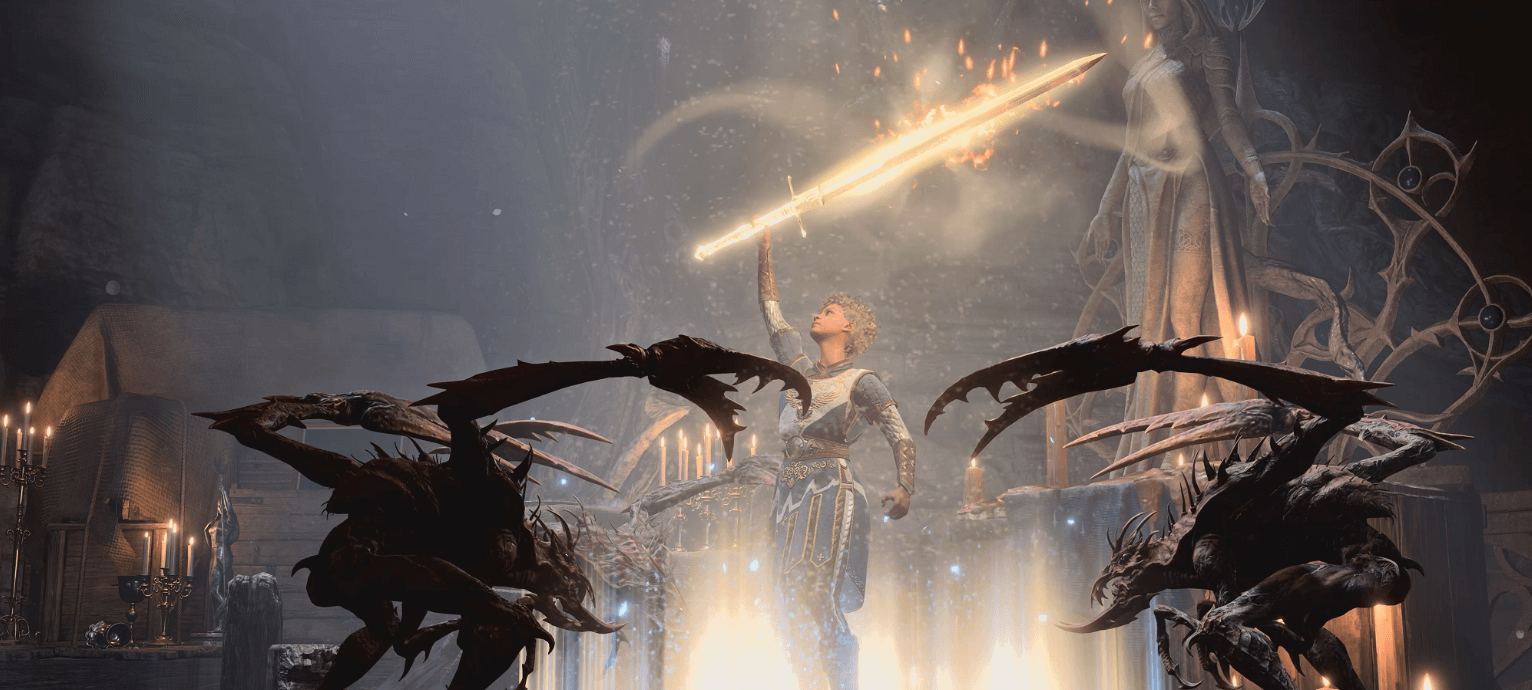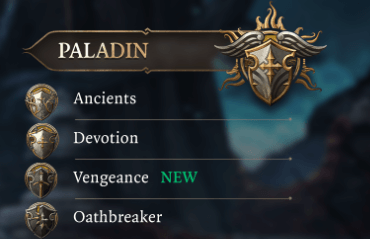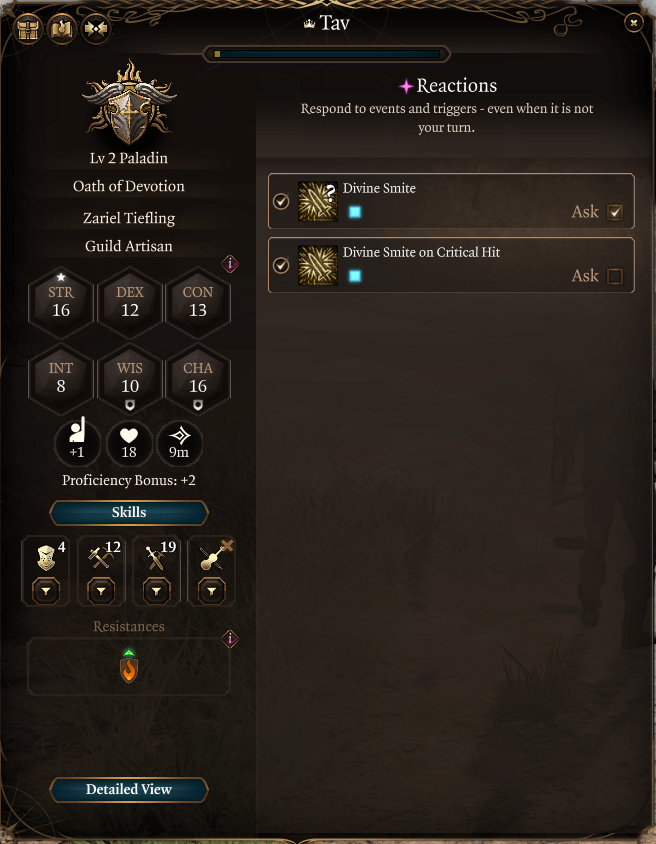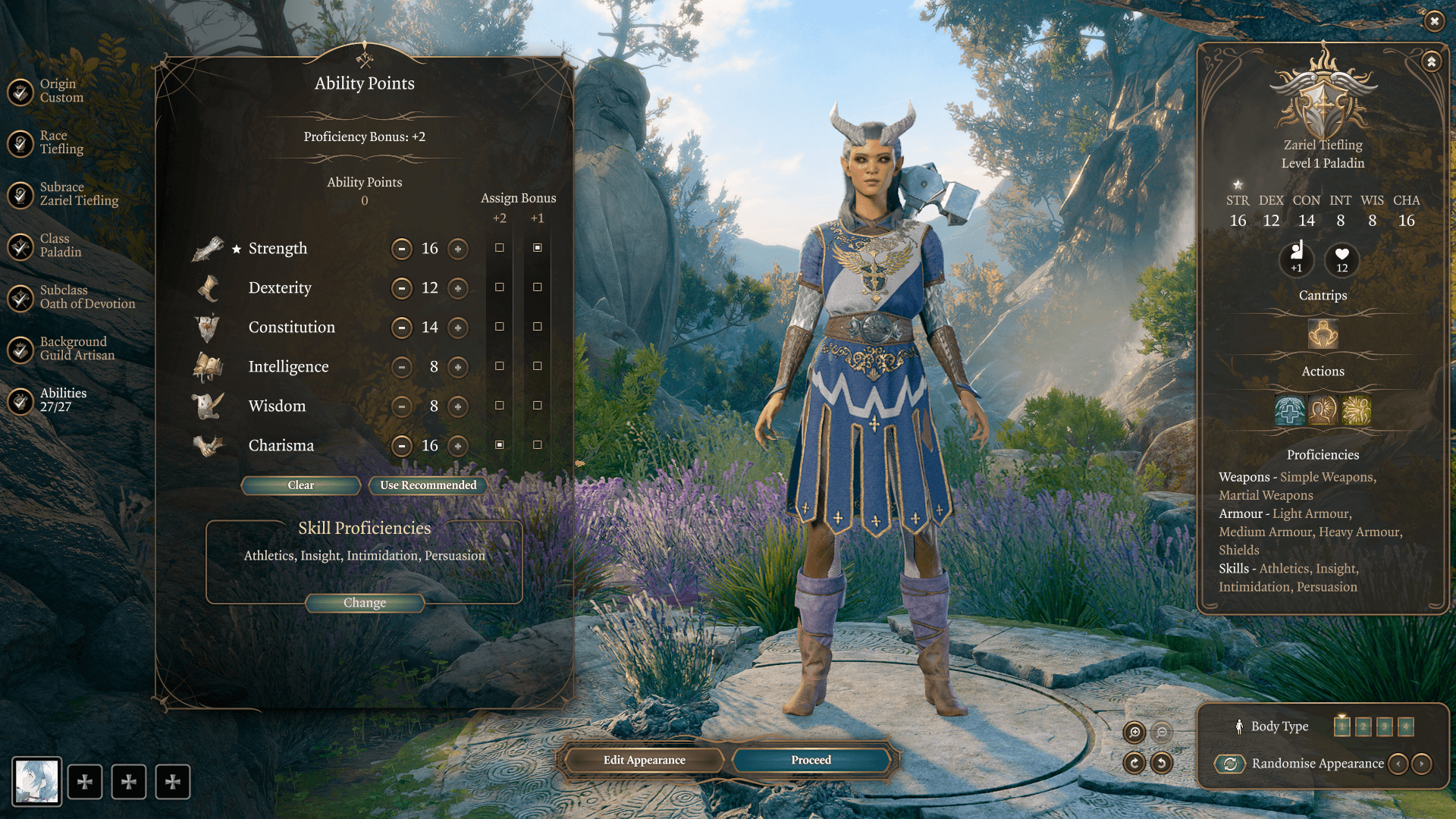Oath of Devotion Paladin Build and Guide
The Oath of Devotion Paladins of Baldurs Gate 3 are the perfect mix of utility and damage, offering some of the best single-target DPS among the classes.
Their abilities often render them better in combat than a traditional Cleric but give them more supportive capabilities than a Barbarian or Fighter.
One of their largest appeals is their strong roleplaying potential, as they can choose to break their sworn oaths (become Oathbreakers) through various actions and decisions made throughout their journey in Faerûn.
In this build guide, we’ll cover how the Oath of Devotion Paladin works, and how to play it!

Find out where the Paladin ranks in our Baldur’s Gate 3 class tier list.
Pros and Cons
Pros
- Durable with high single target damage output
- Simultaneously fills the role of healer and frontline
- Adaptable to any team comp
Cons
- Forced into good alignment (unless you break your Oath)
- Limited AoE abilities
- Less spells compared to other casters
Being extremely durable with high damage, it may seem like Paladins are the perfect 5e martial class. They’re adaptable to any team comp, being able to fill the roles of healer and frontline perfectly. One could say that the Oath of Devotion Paladin is a true jack-of-all-trades.

However, some of the main issues with this class are alignment restriction and having no AOE abilities. All Paladins are forced into good alignment, otherwise they’ll become Oath-broken (which is a different subclass) and may not possess the same gameplay capabilities players expected from a Paladin with their oath still intact.
In early access, Paladins don’t have access to any AoE damage abilities, and their main damage comes from single-target smites, which makes fighting large groups of enemies much more difficult.
Races
The best Oath of Devotion Race is Zariel Tiefling, as it gives them access to new sub-race abilities. This includes Legacy of Avernus: Searing Smite at level 3, Legacy of Avernus: Branding Smite at level 5, and Thaumaturgy. You also gain Hellish Resistance, which gives you fire resistance.
Searing Smite is an essential ability because its potential damage output is greater than a base Paladin’s Searing Smite Spell. While a normal Paladin’s Searing Smite deals an additional 1d6 Fire Damage, Legacy of Avernus: Searing Smite deals an additional 2d6 Fire Damage. I
t doesn’t use a Spell Slot; however, you can only use it once per Long Rest. Thaumaturgy is also a great Cantrip to have, as it can help you pass Charisma checks easier.
Stats, Backgrounds, and Proficiencies
A Paladin’s highest skills should be Charisma, Strength, and Constitution; therefore, when choosing a background, anything with Charisma or Strength skills is preferable.
Soldier or Guild Artisan are perfect for this class as Soldier will grant the player proficiencies in Athletics and Intimidation, and Guild Artisan provides Insight and Persuasion.
Try to have 16 points in Charisma and Strength, and 14 in Constitution. Your Dexterity shouldn’t be higher than 12, as you’ll be wearing Heavy Armor most of the time. Your Ability Points should look something like this.
Recommended Spells and Abilities
A must-have spell list for a Paladin at level 5 is:
- Compelled Duel
- Divine Favour
- Wrathful Smite
- Cure Wounds
- Divine Smite
Compelled Duel is a basic taunt ability and can keep the heat of enemies off of your more squishy allies. Since you’re going to be your team’s frontline, you need to make sure you’re able to protect them.
Cure Wounds has great synergy with Oath of Devotion Paladins, as it gives you even more ways to heal your allies. Additionally, Cure Wounds is a bonus action, so it also allows the player to still be in the fight and not “waste” a turn. The rest of your spells really depend on your own personal team comp. If you don’t have a cleric in your party, then having Bless or Bbane will help support your team further as well as provide you with decent benefits.
As you level up, you gain access to different Smites. At level 2, you gain access to Divine Smite. When you hit someone with a melee attack, you can use a spell slot to deal bonus radiant damage in addition to your melee attack’s damage.

I highly recommend setting this spell as a reaction, so the game asks you if you’d like to use Ddivine Smite when attacking. All smites are good in specific situations, as some push enemies back or pull them closer.
My personal favorite smite is Wrathful Smite, since it can cause enemies to keep their distance from your character, providing you with another turn to make more strategic movements. However, this all comes down to personal preference.
Equipment
Your weapon load-out should be a one-handed weapon and a shield to provide additional armor to your character. You could equip a bow, but since Paladins have low Dexterity, it’s better to just rely on the Wizards or Rogues in your party for ranged damage. The only armor you should be wearing is heavy armor due to the low dexterity of the class. If you’re wearing heavy armor with a one-handed weapon and shield, your AC will be 18.
Conclusion
Paladin is a great class for players who want to deal massive damage with Divine Smites, while also supporting their squishy allies. With access to potent offensive spells, built-in healing, and tankiness Oath of Devotion Paladins makes for a great jack-of-all-trades for any team comp.
 Download APP
Download APP

